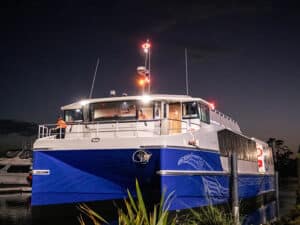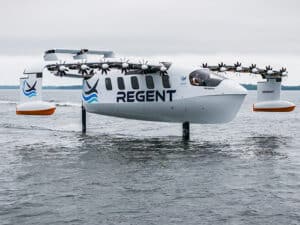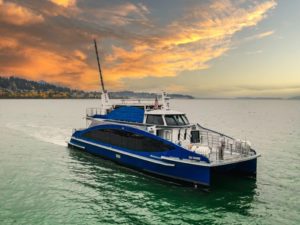
BMT increasingly involved in electric vessel design
Written by Marine Log Staff
SPONSORED CONTENT: From the launch of the “MPA Guardian” hybrid patrol boat in 2022, to the 500 passenger electric ferry concept unveiled at International Workboat Show 2023, BMT has become increasingly involved in electric vessel design, particularly electric ferries. Operators are assessing their options when it comes to sustainable design solutions, and BMT is helping them to find the best solution for each application.
It is widely accepted there is no ‘silver bullet’ for the sustainable fuel drive; alternative marine fuels as well as battery electric solutions have their role to play depending on the application. Where schedules and routes are predictable, battery electric is a serious contender as a low carbon transport solution. However, electric ferries are not without their design challenges, which is where BMT’s experience comes into play.
An intricate understanding of the intended route and service is vital, to ensure the Energy Storage System (ESS) can cope with the electrical load required. Power consumption during transit and manoeuvring forms a large part of this, but the hotel load is also an important consideration. For example, power consumption of air conditioning will vary depending on factors such as the operating location, season and vessel size.
The shore side charging infrastructure has an important influence on the vessel design and battery selection, so it is essential to understand the charging capabilities at an early stage of design to ensure the vessel’s ESS can be charged sufficiently between transits. Battery selection is an iterative process considering factors such as:
- Power draw, for both propulsion and hotel loads
- Battery maximum charge / discharge rate
- Battery maximum depth of discharge
- Battery life requirements
Applying careful early-stage design refinement is beneficial to the overall design process, including optimizing the hull form and propulsion system to reduce resistance and power requirements, which helps reduce ESS size and weight.
Finding the balance between speed, charge times and battery sizing is an important part of the design role that BMT is being asked to fulfill. Compared to a conventional vessel where the designer may simply be asked to design a vessel that can meet a schedule, electric vessel design can be a more collaborative process.
Beyond the emissions benefit, there are some overlooked benefits to electric ferries compared to conventional vessels, including:
- Elimination of complex and heavy equipment and supporting systems
- Reduction in variable loads such as fuel leading to more predictable operating load conditions
- More optimised general arrangement to meet operational needs
- Ability to utilise a single integrator to simplify electrical system integration
- Less maintenance due to less moving parts
- Reduction in noise pollution
This provides just a sample of the considerations that go into electric ferry design. With designs ranging from 9m to 85m, BMT is renowned for their expertise in the ferry design market. In recent years they have increased their focus on a sustainable transport future, with electrification as one aspect of future developments. BMT continues to help clients navigate the challenges and benefits of electric ferry design.




